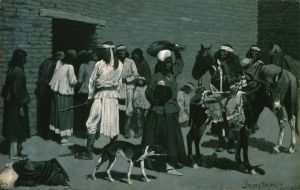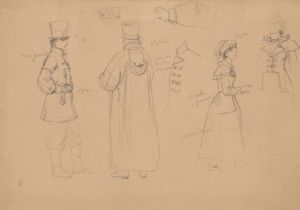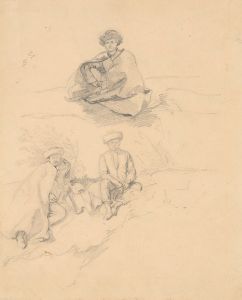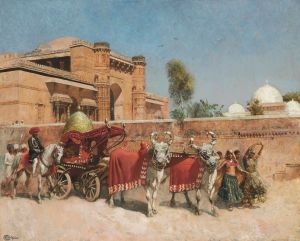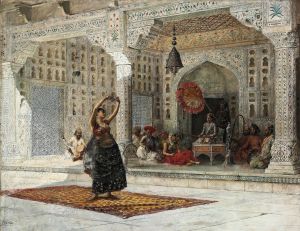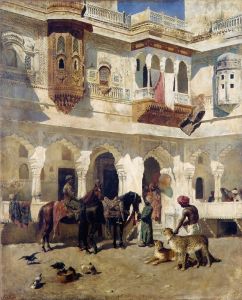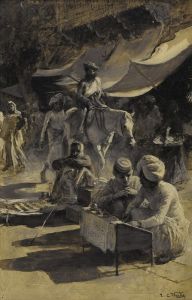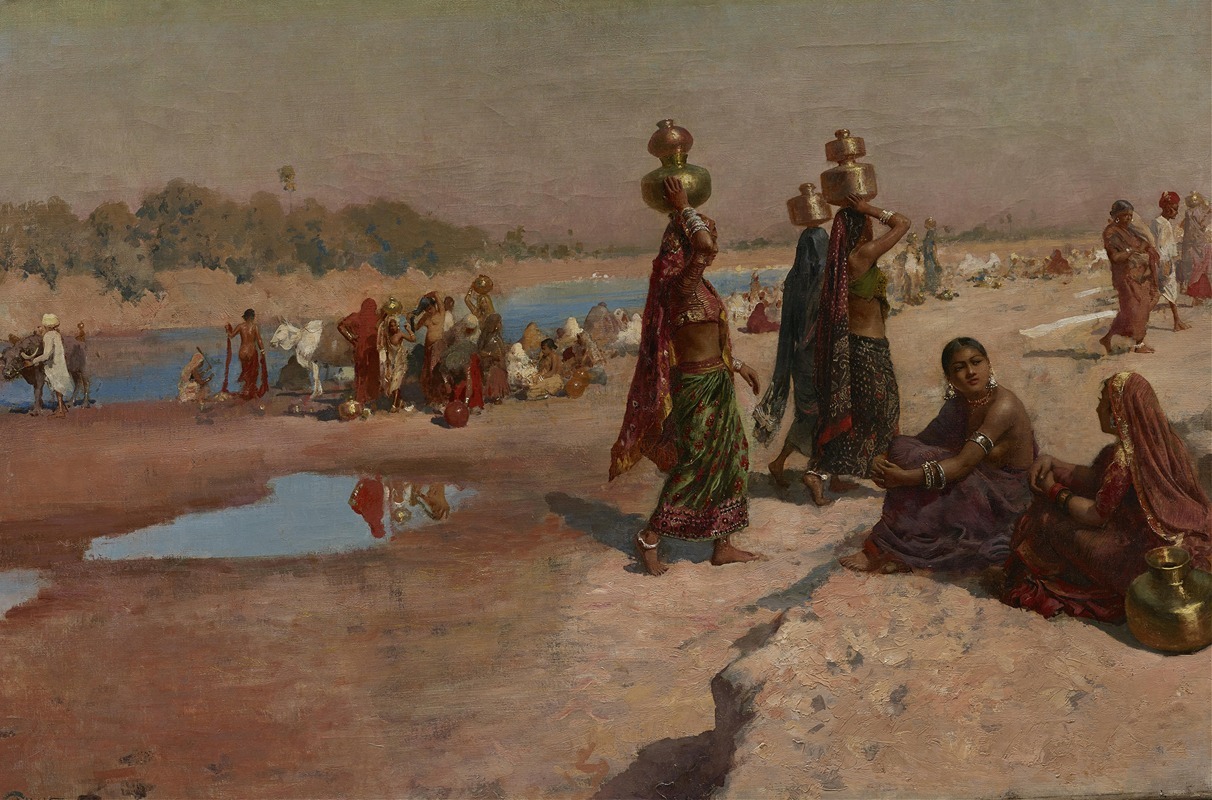
Water Carriers of the Ganges
A hand-painted replica of Edwin Lord Weeks’s masterpiece Water Carriers of the Ganges, meticulously crafted by professional artists to capture the true essence of the original. Each piece is created with museum-quality canvas and rare mineral pigments, carefully painted by experienced artists with delicate brushstrokes and rich, layered colors to perfectly recreate the texture of the original artwork. Unlike machine-printed reproductions, this hand-painted version brings the painting to life, infused with the artist’s emotions and skill in every stroke. Whether for personal collection or home decoration, it instantly elevates the artistic atmosphere of any space.
"Water Carriers of the Ganges" is a painting by the American artist Edwin Lord Weeks, who was renowned for his Orientalist works in the late 19th and early 20th centuries. Weeks was born in Boston in 1849 and developed an early interest in art and travel. He became one of the most prominent American Orientalist painters, known for his detailed and vibrant depictions of life in the Middle East, North Africa, and South Asia.
Weeks traveled extensively throughout his life, and his journeys to India in the late 19th century greatly influenced his work. The painting "Water Carriers of the Ganges" is a result of his travels and observations in India. The Ganges River, considered sacred in Hinduism, is a significant cultural and religious symbol in India, and it has been a source of inspiration for many artists and writers.
In "Water Carriers of the Ganges," Weeks captures a scene that reflects the daily life and labor of individuals who lived along this iconic river. The painting likely depicts local people engaged in the task of carrying water, an essential activity in many communities, especially in regions where access to clean water is a daily challenge. The Ganges, being a vital water source, supports numerous livelihoods, and water carriers play a crucial role in the distribution of this resource.
Weeks' painting style is characterized by his attention to detail and his ability to capture the vibrancy of the scenes he witnessed. His use of color and light often brings a sense of realism and immediacy to his works, allowing viewers to feel as though they are part of the scene. In "Water Carriers of the Ganges," Weeks likely employed these techniques to convey the atmosphere and environment of the riverside, highlighting the interplay of light on water and the textures of the landscape.
The painting is an example of Orientalism, a genre that often romanticized and exoticized Eastern cultures through a Western lens. While Weeks' work is appreciated for its artistic merit and technical skill, it is also part of a broader historical context where Western artists depicted Eastern subjects in ways that sometimes reinforced stereotypes or overlooked the complexities of the cultures they portrayed.
Edwin Lord Weeks' contributions to art were significant during his lifetime, and his works continue to be studied and appreciated for their artistic quality and historical context. "Water Carriers of the Ganges" is one of many paintings that showcase his ability to document and interpret the diverse cultures he encountered during his travels. His paintings are housed in various collections and museums, where they continue to be accessible to the public and art historians alike.
Weeks passed away in 1903, but his legacy endures through his extensive body of work, which provides a window into the world as he saw it during his travels. His paintings remain a testament to his skill as an artist and his fascination with the diverse cultures and landscapes he encountered.





